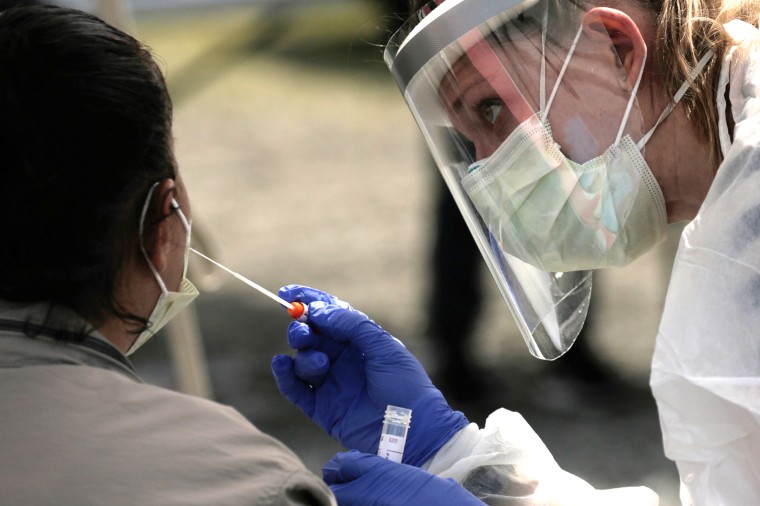As a rule, data-driven decision-making can be an important part of responsible governing, but Donald Trump has an unfortunate habit of looking at numbers though the lens of political optics. At a White House event yesterday, for example, the president presented this awkward observation:
"The media likes to say we have the most [coronavirus] cases, but we do, by far, the most testing. If we did very little testing, we wouldn't have the most cases. So, in a way, by doing all of this testing, we make ourselves look bad."
He quickly added that the United States has "done more testing than every other country combined" -- which is ridiculously untrue, but which has nevertheless become one of the president's favorite lies.
Regardless, Trump's unscripted comments offered a peek into an unhealthy perspective: he apparently has a problem with coronavirus testing, despite its critical significance, because the resulting data makes his administration "look bad."
It's part of a painful presidential pattern regarding the optics of statistics. As regular readers may recall, in early March, as the crisis was taking shape, Trump told Fox News he struggled with a decision about bringing Americans who'd contracted the coronavirus abroad back to U.S. soil. As he put it, he "hated to do it statistically," adding that the question on his mind at the time was, "Is it going to look bad?"
As we discussed soon after, in context, Trump seemed to be suggesting that he had certain talking points he wanted to use and was concerned about ailing American patients messing up his political message.
Soon after, during a visit to the Centers for Disease Control, the president was even less subtle on this point. As part of a discussion about a cruise ship with Americans on board, Trump told reporters, "I like the numbers being where they are. I don't need to have the numbers double because of one ship."
When a reporter asked why he'd prioritize "attractive numbers" over treating ailing Americans, Trump quickly said that providing care was more important -- before quickly adding how much emphasis he places on the tallies. "I like the numbers," he added. "I would rather have the numbers stay where they are."
It's easy to imagine an investigative reporter convincing a high-level White House source to leak a devastating anecdote along these lines. "Behind the scenes," the report would read, "Trump's principal focus is less on public health and more on political metrics and the impact infection rates have on political talking points."
Except in this case, there's no need for an investigative reporter to dig up such a damaging revelation -- because Trump keeps saying it out loud, on the record, and on camera, indifferent to how unsettling it is to see a president respond to a deadly pandemic this way.
Complicating matters is the overwhelming hypocrisy surrounding the president's concerns about testing making his team "look bad": the White House is doing an extraordinary amount of testing for Trump, Vice President Mike Pence, and those they interact with. As a Washington Post analysis noted this morning, "There is at least one employer in the United States that is currently meeting a robust standard of testing aimed at preventing an outbreak: the White House."
MSNBC's Chris Hayes added this week, "The White House actually does have a robust testing plan to safely get back to a semblance of normal. It just doesn't involve you."
To hear the president tell it, extensive testing at 1600 Pennsylvania Avenue is sensible, but extensive testing elsewhere produces positive cases that make the administration "look bad." It's quite a standard.
